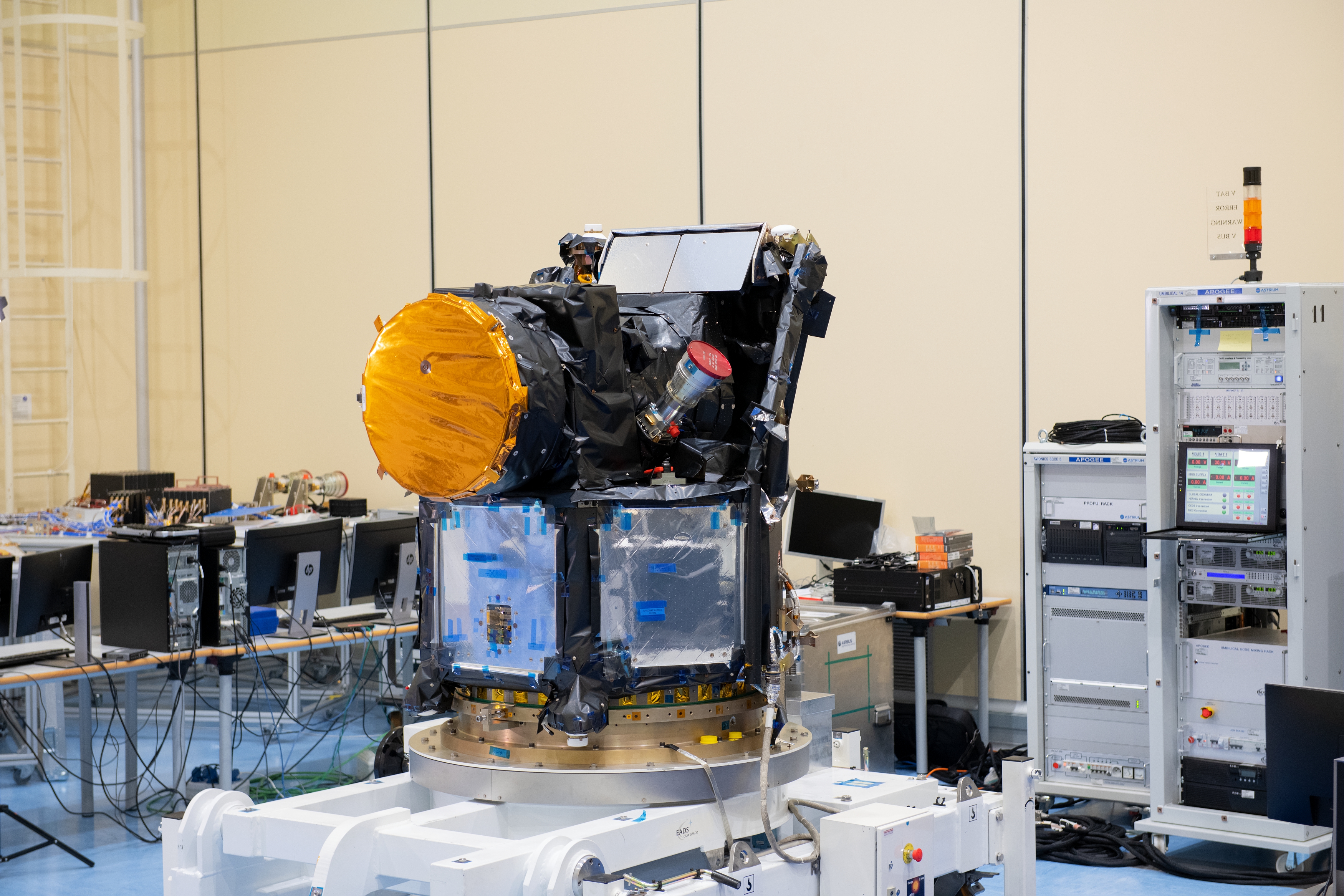ESA’s CHEOPS satellite will measure the sizes of exoplanets

The CHEOPS satellite being tested before launch. It is 1.5 metres long, and weighs 280kg. Copyright: ESA - S. Corvaja
03 December 2019
Have you ever looked up at the night sky and wondered if there are other planets out there, beyond our Solar System? Astronomers have discovered that there are! We call them extrasolar planets, or exoplanets for short. Thousands have been found so far, and that number will only go up as we continue the search.
It is very difficult to get an actual photograph of an exoplanet, because they are so far away. Instead, astronomers use different techniques to find them, such as seeing stars wobble in space due to the gravity of orbiting exoplanets. This method, along with others, does not just help us find these planets, but also allows astronomers to work out the mass of exoplanets, and how far they orbit from their stars. What we now need is a telescope that specialises in telling us how big exoplanets are. This is where CHEOPS comes in!
Scheduled for launch in December 2019, CHEOPS – full name CHaracterising ExOPlanet Satellite – is an ESA mission dedicated to helping us learn more about exoplanets. Instead of searching for new exoplanets, CHEOPS is going to study those that we have already found and where the mass of the planet has been calculated.
CHEOPS has a high-tech and extremely sensitive instrument called a photometer that measures the intensity of light. As an exoplanet passes in front of its star and blocks some of its light, CHEOPS will measure how much the brightness of the star dips. This will allow mission scientists to calculate the size of the exoplanet! Combine that information with data on mass, and it will be possible to work out the density of exoplanets. That will give clues as to what the planets are made of. Are they rocky worlds, or gas giants? Could they even have large oceans?

CHEOPS will study exoplanets from the size of Earth up to that of Neptune. Copyright: ESA
With this information, scientists will be able to make a list of the exoplanets that are most likely to have atmospheres. These will be excellent targets for future astronomers, using even more powerful telescopes and sensitive instruments to study these distant worlds. What secrets will they discover, with CHEOPS pointing the way?
Cool fact: CHEOPS’ photometer is so sensitive that it can study relatively small exoplanets – up to the size of Neptune!




